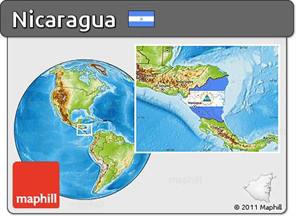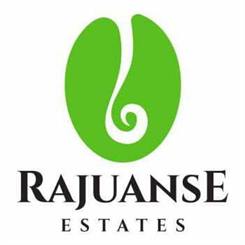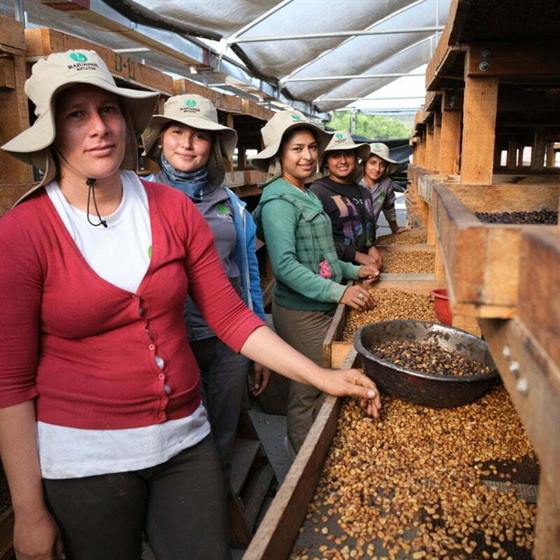Nicaraguan Rajuanse Pacamara Washed processed Pacamara cultivar coffee from Buena Esperanza, sourced via Zuka Premium division. We are happy to have a coffee from this estate again after a 18 month break.
Nicaraguan Coffee
Nicaragua has cultivated coffee since 1790. Initially introduced to the country out of curiosity by Catholic missionaries, it wasn’t until the 1850s that large-scale coffee cultivation took root. By 1870, coffee had firmly established itself as Nicaragua’s primary export crop, a position it maintained for the subsequent century.
During the eras of dictatorship and communism, coffee remained Nicaragua’s prominent export. However, the sector faced significant challenges in the late 1990s. The 1999 coffee price crash dealt a severe blow, compounded by the devastation caused by Hurricane Mitch in 1998 and a subsequent drought.
Today, over 71% of Nicaraguan coffee farmers are smallholders with less than 15 hectares dedicated to coffee cultivation. Despite transportation limitations and ecological concerns related to volcanic slopes in the Pacific region, Nicaraguan coffee production has rebounded, accompanied by an improvement in quality.
The Story of Buena Esperanza Coffee Farm
This coffee is from the coffee farm based on Rajuanse Estate called Buena Esperanza. Nestled in the heart of Nicaragua, the Buena Esperanza coffee farm boasts a rich history. From its origins as part of a timber operation to its transformation into a thriving coffee plantation, let’s explore the fascinating journey of this land.
Origins and Transformation
Buena Esperanza’s story begins in the 1960s, when an American lumber company owned the land. Covering an impressive 2,818 hectares, it was a vast expanse waiting for its destiny. Then, in the early 1970s the land decided to become a coffee farm. With the guidance of Don Manuel, one of the original workers, the first coffee plants were lovingly planted. Despite the political upheavals of the late 1970s and 1980s, coffee production persisted, firmly establishing itself as Nicaragua’s prominent export.
The Secrets Within
Imagine a valley surrounded by majestic mountains—the very heart of Buena Esperanza. Here, microclimates create pockets of varying weather conditions. Some spots bask in sunlight, while others enjoy gentle breezes. These diverse conditions allow for the cultivation of different coffee varieties. The farm’s elevation, ranging from 1100 to 1200 meters, ensures optimal growing conditions. And the annual rainfall of 3000 millimeters nourishes the coffee plants, making them thrive.
Buena Esperanza wears its environmental credentials proudly. Certified by the Rain Forest Alliance and Café Practice, it actively contributes to nature conservation. Birds chirp happily among the coffee trees, and the forest echoes with life.
Challenges and Resilience
Buena Esperanza covers a total of 846 hectares, with 405 hectares dedicated to coffee cultivation. But it’s not just about coffee; the other half of the land remains a natural forest. This balance is crucial for combating local climate change and preserving the habitat for native fauna.
The farm’s commitment extends beyond its borders. Collaborating with Engineers Without Borders, Buena Esperanza ensures that neighbouring communities have access to clean, drinkable water. Springs on the farm supply this precious resource, and the locals actively participate in maintenance and sustainable practices.
Rajuanse
Guardian of the Forest: Meet Rajuanse, our forest steward. Every year, gaps within the farm are filled with local trees from the farm’s reforestation nursery. These trees provide shade for the coffee plants and retain essential humidity. Rajuanse’s mission? To keep the forest thriving and ensure that nature continues to flourish.
Buena Esperanza it not just a farm; it’s a place where beans turn into dreams, and every sip tells a tale of resilience and commitment.
Success and Milling
In 2018, Buena Esperanza achieved favorable placement in the finals of the Cup of Excellence (CoE) in Nicaragua with a washed Pacamara. As a result, it was time to naturally integrate into the Specialty Coffee Segment. During the 2018/19 cycle, Rajuanse Estate established a Specialty Coffee Team. Working collaboratively, the Specialty Coffee Team selected different areas of the farm and various varieties that presented the most favorable conditions to maximize the natural profiles of the coffee beans. At the mill, the decision is made to select the drying process, which is then promptly prepared for transport to the off-site dry mill.
Sajonia Estate Coffee mills the coffees, dedicating a Specialty Coffee line exclusively for Rajuanse in a controlled environment. The coffees here undergo processing using Natural, Honey, or Washed methods. The administrative offices of Rajuanse are located at Sajonia Estate, where all their coffee is tracked from farm to export.
Pacamara Nanolot
We got these details from a WhatsApp discussion with Ramiro to clarify their process, here is an excerpt from that discussion:
I love to share anything that can bring greater awareness. Pacamaras are not high yielding and what you get out of it then has to be purge if smaller bean size, so it is basically for small lots because it is expensive to produce.
The structure for drying is designed to keep the temperature under control and protect from rain and wind flow since it is crucial for drying. There is no direct heat.
Specialize structures are used just for this coffee. We have restricted access because we want to contain any outsider from not following protocol, so doors get locked at end of the day. The structure promotes airflow and is designed to allow hot air to escape out the top easily. The desired result lets in fresh air. This means what dries coffee is cool air, not heat.
During that process for each rack, as they are shuffled, starts getting purged, by selecting the beans that present uneven characteristics. This process might take around 28 days, depending on the ambient wind and temperature.2
Details of Nicaraguan Rajuanse Pacamara Washed
Ramiro classes this coffee as a “nanolot” we are happy to call it a microlot.
Starting brews:
| Brew Method | Ratio | Brew Method | Ratio | |
|---|---|---|---|---|
| Espresso | 1:2.2 | AeroPress | 18g:200g | |
| Plunger | 24g:400g | Pour over/filter | 18.5g:300g |
Transparency Information
| Sourced from | Zuka Trading |
|---|---|
| Producer/Organization | Ramiro Gurdian / Rajuanse Estate |
| FOB price | Pending, waiting for Zuka to permit us to publish |
| Cupping score | 84 (our score) |
| Lot size we have committed to | 1x 69kg bag (we wanted more, but there was only this bag) |
| Relationship | Our relationship with Ramiro is now 5 years old. |
| Other Information | We spoke directly with Ramiro, who is happy working with Sevenoaks. |
Sources:
1 Marketing material from Zuka.
2 Conversation with Ramiro.
The photos were taken by Ramiro. Includes Tatiana Mairena who is part of the family reserve team. Also, shown are other members of the family reserve team.


















Reviews
There are no reviews yet.